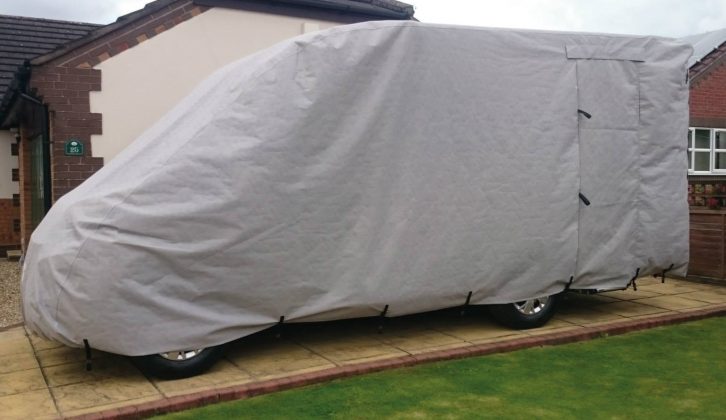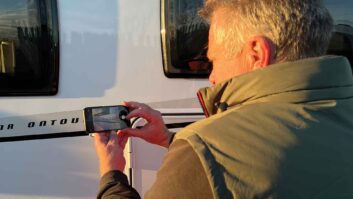While many of us would love to use our motorhomes more frequently, there are often outside factors (such as family or work commitments) that prevent us from doing so, especially during the winter.
So if you can’t use your beloved home from home all year round, what do you do with it over the colder months?
Many just leave it in a ‘ready to go’ state, but this option is not ideal. So let’s look at the best way to put your ‘van into winter hibernation.
If you decide to take your ’van off the road during the winter months, the first issue is where to store it. Some have space at home, but others will need to use a caravan and motorhome storage site – if you do, go for one registered with CaSSOA (the Caravan Storage Site Owners’ Association). Don’t be tempted by a local farm: by their nature, they are full of wildlife to whom your motorhome presents a cosy nesting spot – and mice can cause a lot of damage!
Be prepared
Give the exterior a thorough clean to get rid of all the accumulated grime that could damage your paint or gelcoat if left in place. A good coat of high-quality wax or sealant is a good way to preserve the outside of your investment. (Click here to see our motorhome cleaning product reviews.) If it is stored at home, you may consider using a cover to protect it from bird droppings and other airborne detritus.
While cleaning your pride and joy, don’t forget the wheelarches – dirt collects in them and can hold moisture, which could cause corrosion. On Fiat Ducatos, Peugeot Boxers and Citroën Relays, pay special attention to the front arches, especially up in the strut turret: these can rot out and it’s a difficult (and expensive) repair.
When you park your ’van, leave it in gear with the handbrake off to prevent the brakes seizing. Check your tyres – some prefer to inflate them to maximum pressure for storage, which can help to prevent flat-spots. (Read our tyre inflator reviews here to find a good compressor to make life easier.) If you can, jack up and support the vehicle so that the wheels are off the ground; you could even remove the wheels and store them at home. Ensure the coolant has sufficient antifreeze, or you may incur serious engine damage in sub-zero temperatures.
Don’t be a stranger
Visit your motorhome every couple of weeks to check it over and run the engine for at least 45 mins. A 20-30-mile drive is even better.
It should be obvious that you need to drain the motorhome water systems thoroughly. Open your fresh-water drain point, remove the water-pump grit filter and open the taps, leaving them set halfway between hot and cold. Remove the showerhead and blow down the flexi-pipe with all taps open to remove as much water as possible from the pipework. Don’t forget to drain the toilet flush tank, empty and clean the cassette and leave the toilet flap open (this stops the seal sticking when it dries out). Drain the grey waste tank, leaving all drain points open.
If you have space to store the soft furnishings indoors then do so; if you leave cushions in the ‘van all winter they can get damp and musty, or provide cosy bedding material for rodents.
Remove all foodstuffs from your motorhome – mice love dried pasta and rice! – plus disconnect and, if possible, remove leisure batteries and keep them indoors and frequently charged. (A top-up charge of 24 hours once a fortnight should keep them healthy.) We have more advice on motorhome batteries here and tips on keeping leisure batteries charged here. It is not a good idea to disconnect the engine battery: any alarm or tracking system fitted will rely on power from it.
We hope that these tips will help you to keep your motorhome in top condition during its winter lay-up, so that it will be ready to roll again, just as soon as you need it, come springtime!
A keen motorcaravanner, Practical Motorhome’s technical expert Diamond Dave runs his own leisure vehicle workshop. Find out more at Dave Newell Leisure Vehicle Services.
Remove all foodstuffs from your motorhome – mice love dried pasta and rice!









